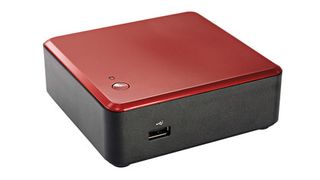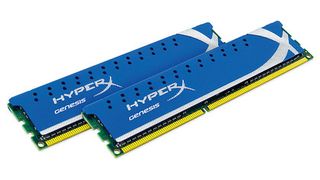We're going to kick things off as is often the case with the processor but for a couple of good reasons. So we all know that when Intel introduced its Sandy Bridge processors it had finally introduced an integrated graphics solution that was just good enough to play the latest games. Something you could never say about older attempts, which seemed nothing more than afterthoughts to fill out the feature list.
The crucial aspect of putting the graphics on-die with the CPU is that it all has to fit within the TDP of the processor package. The processor is core to system performance, entirely so when you're relying on it to provide the performance graphics end of the system too.
Potentially, both Ivy Bridge and Sandy Bridge processors offer low-power models that could be used within a suitable system, it's just choosing the right one.
The 'older' HD 3000 offers 12 execution units at a higher 650/1250 clock, while the newer HD Graphics 2500 has just 6 at 650/1150. You would think this would lean us towards a Sandy Bridge packing HD Graphics 3000 model, such as the Intel Core i3 2105. But doing so trips you from the 35W TDP into the 65W TDP category as it's built on the 32nm process.
Opting for the 22nm based Intel Core i3 3220T provides a chip that retains a reasonable 2.8GHz speed with its twin cores and Hyper Threading but one that runs within the 35W TDP too. Opting for the HD Graphics 4000 or a faster 3.4GHz model bumps the processor up to 55W TDP. As it also turns out the revised HD Graphics 2500, while running half the number of execution units of the older HD Graphics 3000, manages better performance per-unit than the older model.
If we were going for low-power gold then the Intel Core i3 3217U that offers a tiny 17W TDP but still with an enhanced HD Graphics 4000 would be very tempting, until you realise the GPU clock is crippled at 350MHz. It actually tempted Intel itself, as this is the processor chosen for the Intel NUC mini-PC.

Our main turn-off for this model is the low 1.8GHz main core speed, as we feel the extra 1GHz will benefit us in the long run for general tasks and gaming. If we weren't going for lowest-power then certainly the Intel Core i3 3225 would be of interest.
Get daily insight, inspiration and deals in your inbox
Sign up for breaking news, reviews, opinion, top tech deals, and more.
In a similar frame of mind the name AMD hasn't so far been mentioned at all. That's because unfortunately when it comes to low-power AMD can't match Intel on the fabrication process technology. The AMD A10-5800K can slap the Core i3 3225 around in terms of GPU performance and pricing. But take a look at its TDP and it is 100W against the Core i3 3225 TDP of just 55W, while AMD can't build an A-series processor with a TDP below 65W.
Mummy or chips?

Connected on a certain level with processor power usages is that of its particular chipset and motherboard. In the past motherboard chipsets have been surreptitiously power hungry. This was partly due to them being based on older fabrication processes. Added on top of that, older chipsets had to do a lot of donkey work which has now been integrated onto the more efficient processor die, and let's not forget the benefit of the integrated graphics element.
We've chosen the mid-range Intel B75 chipset, this has a TDP of 6.7W while it offers all the advanced ports you'd be after such as USB 2.0/3.0 and PCI Express 3.0. On a being nice to AMD note its A-series Fusion Controller Hubs or FCH are actually competitive on power, dissipating between 4.7W and 7.8W, this certainly wasn't always the case with the AMD 890GX chipset hitting 22W with its integrated Radeon HD 4290 graphics.












